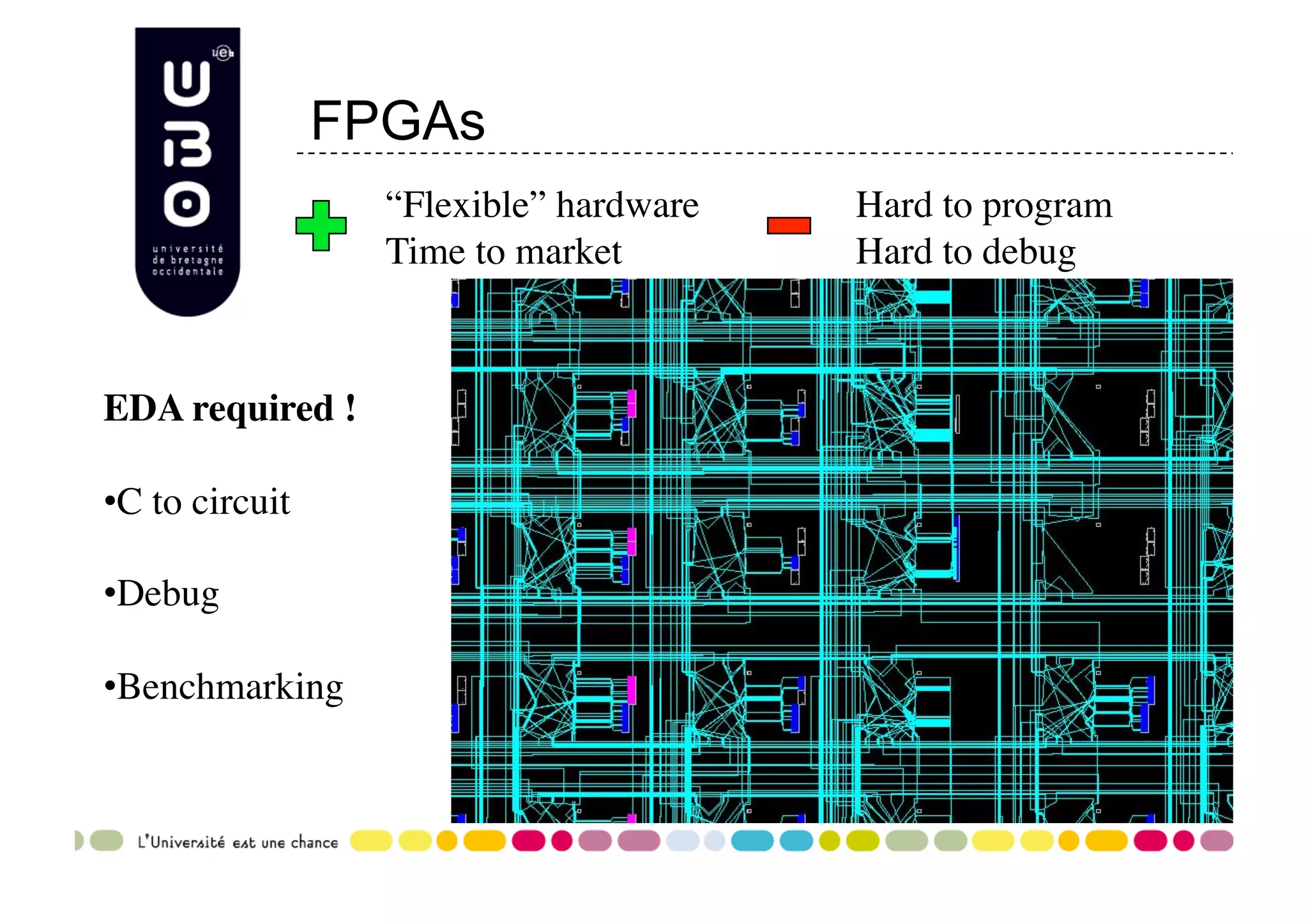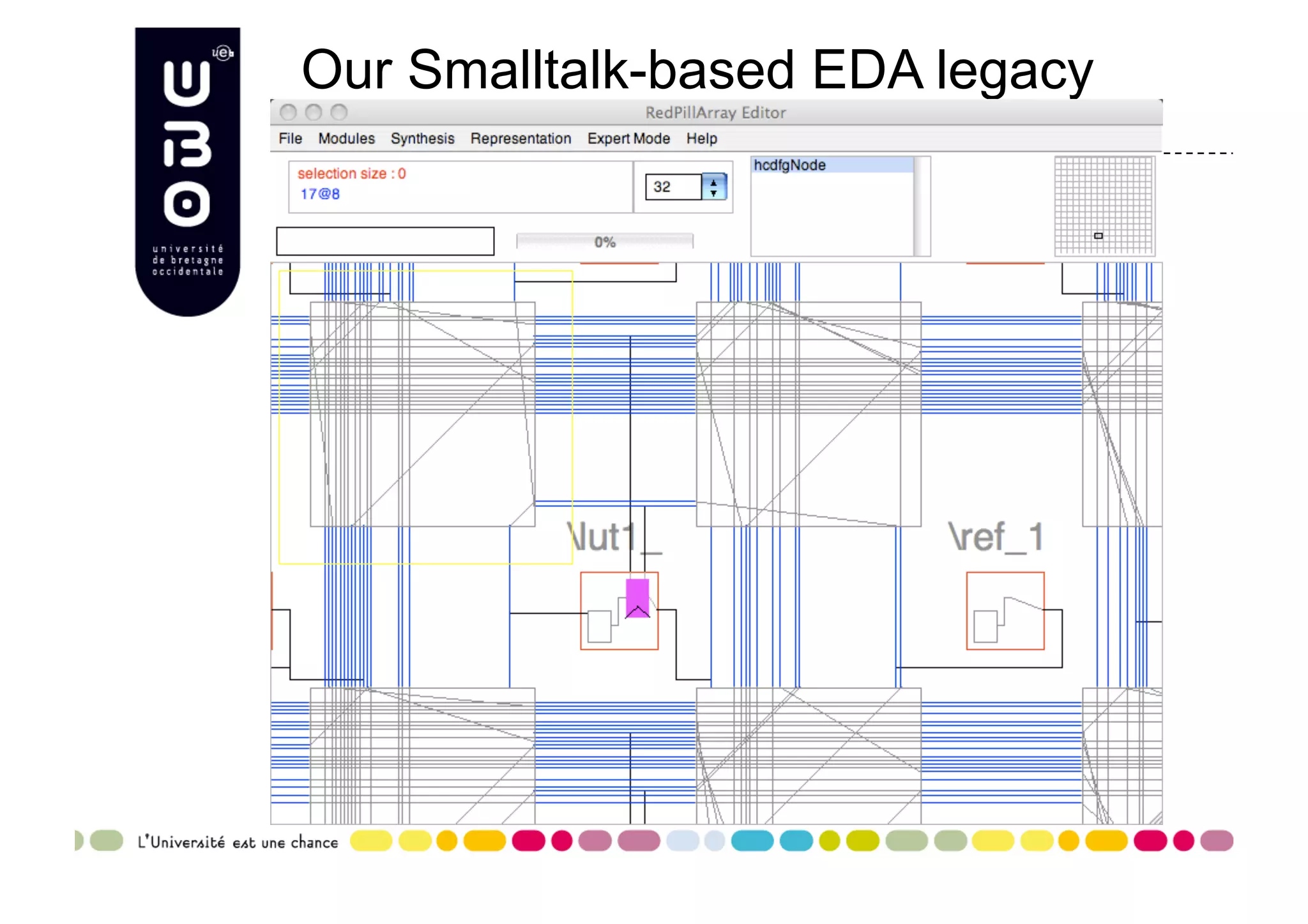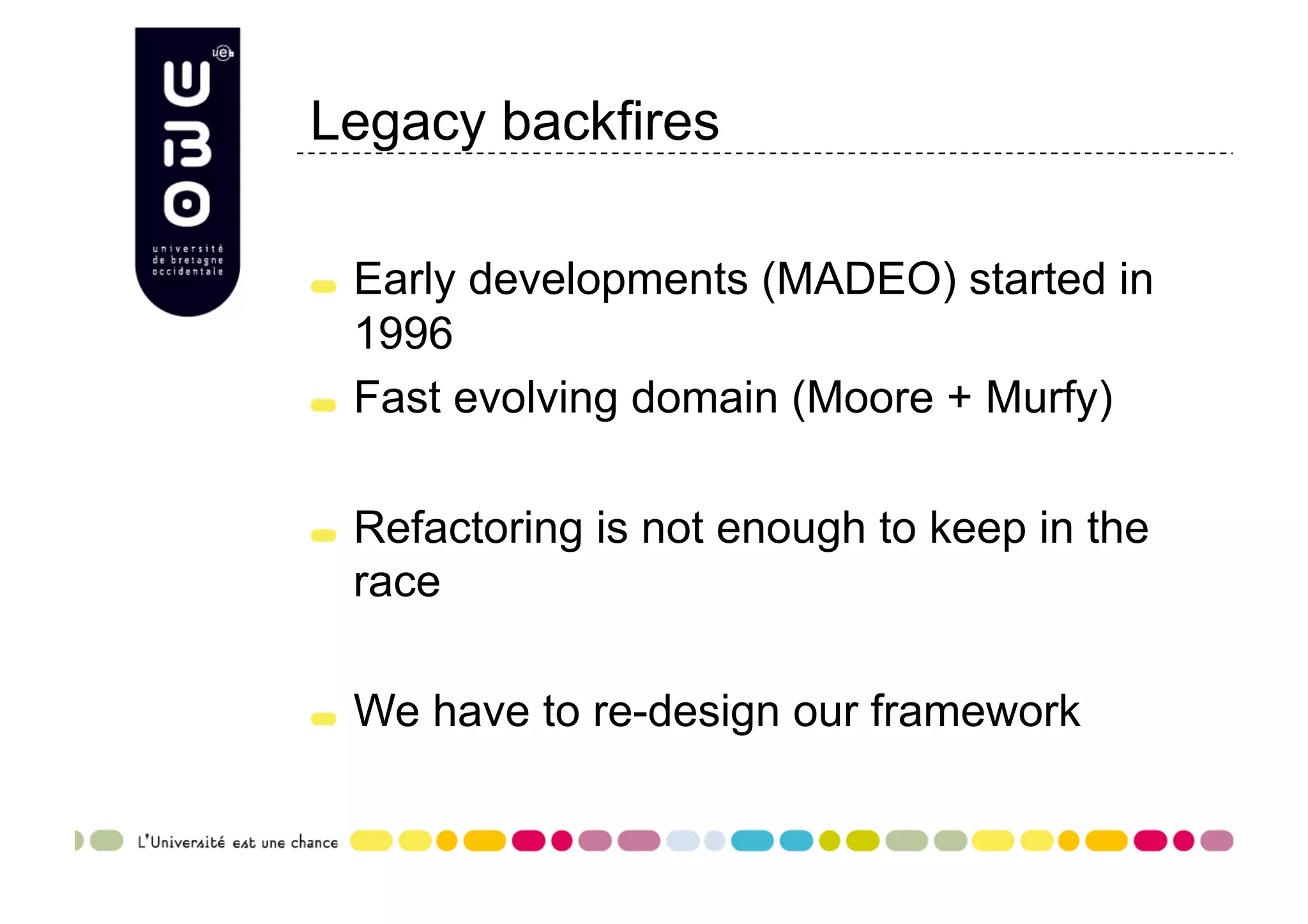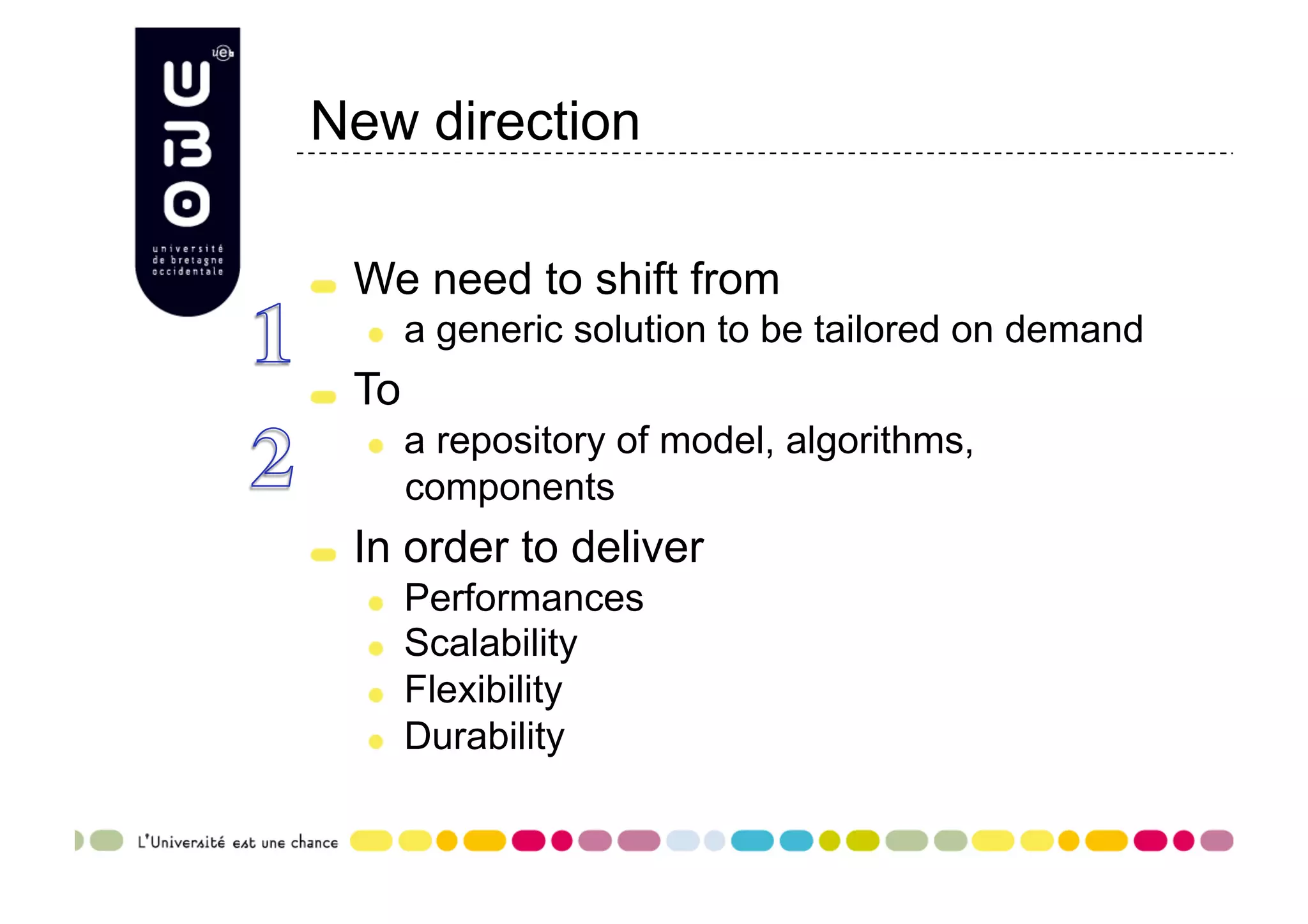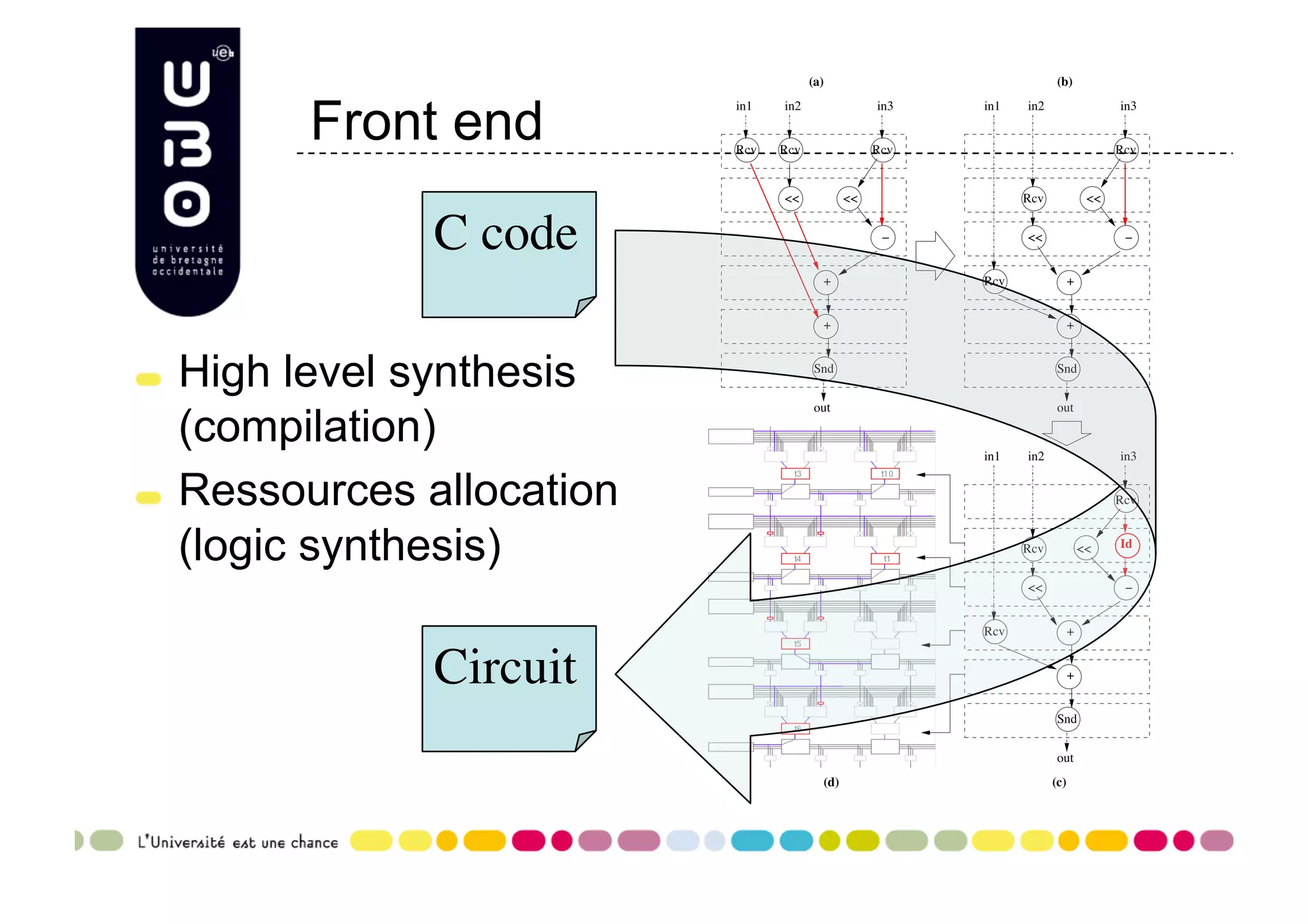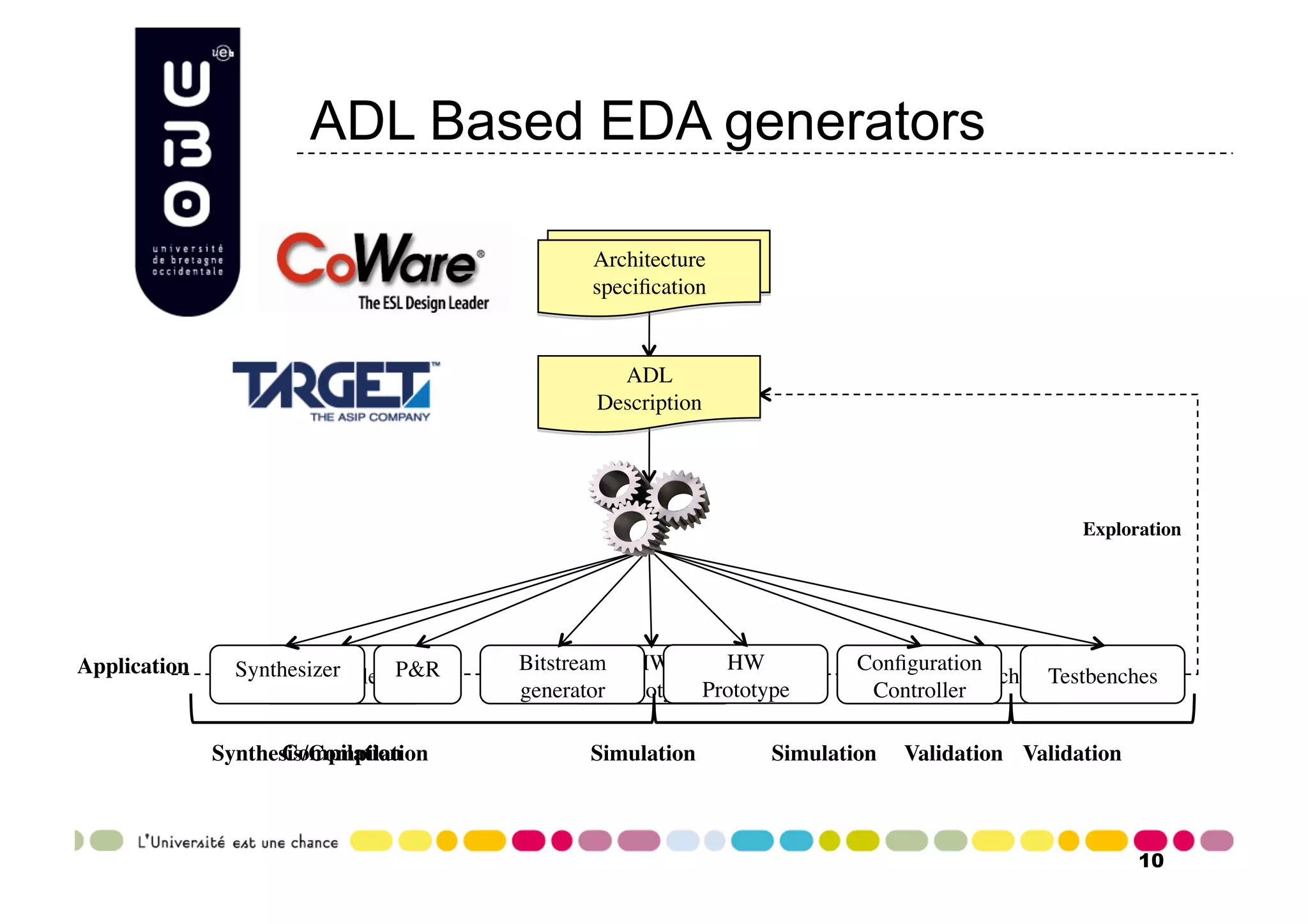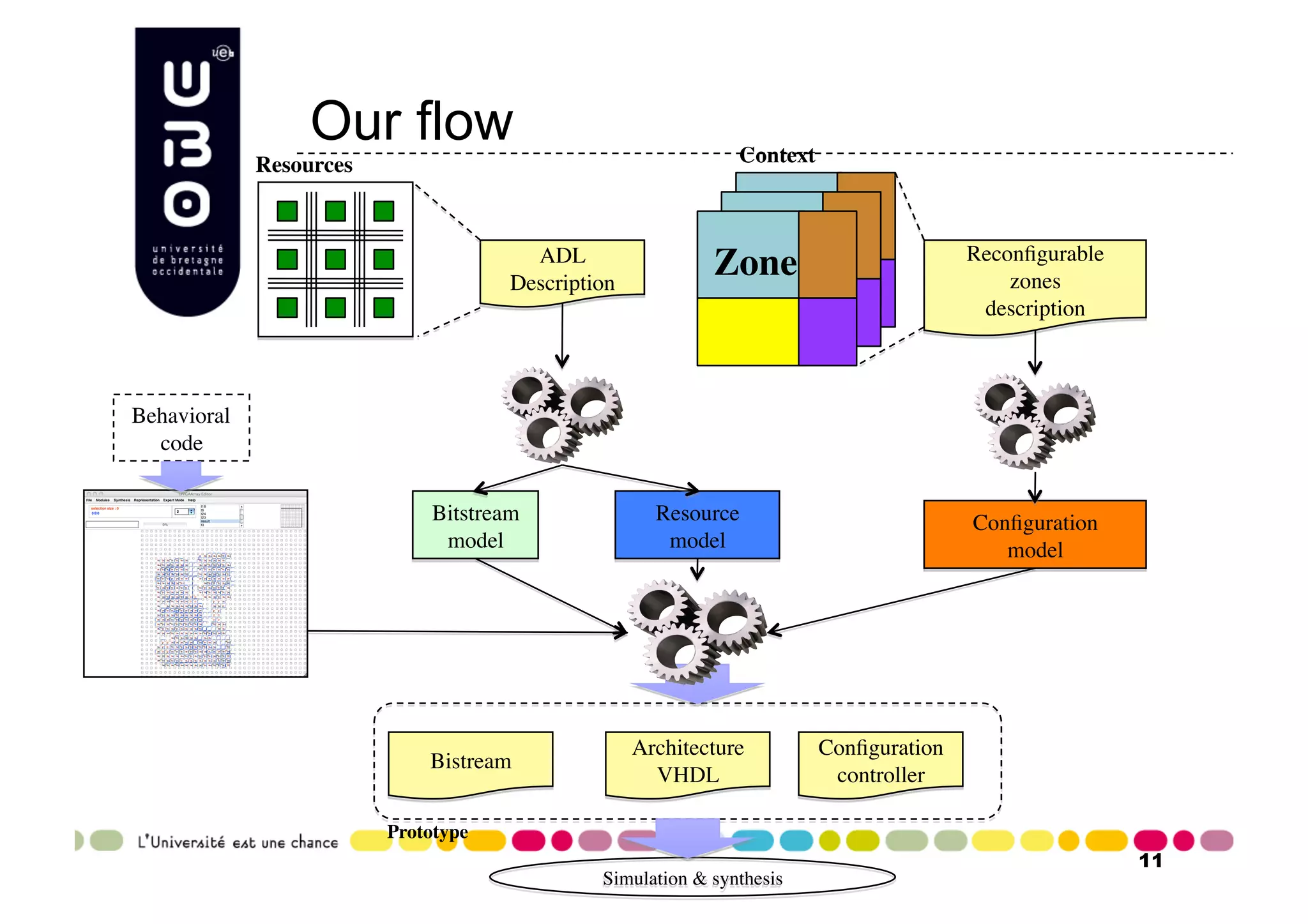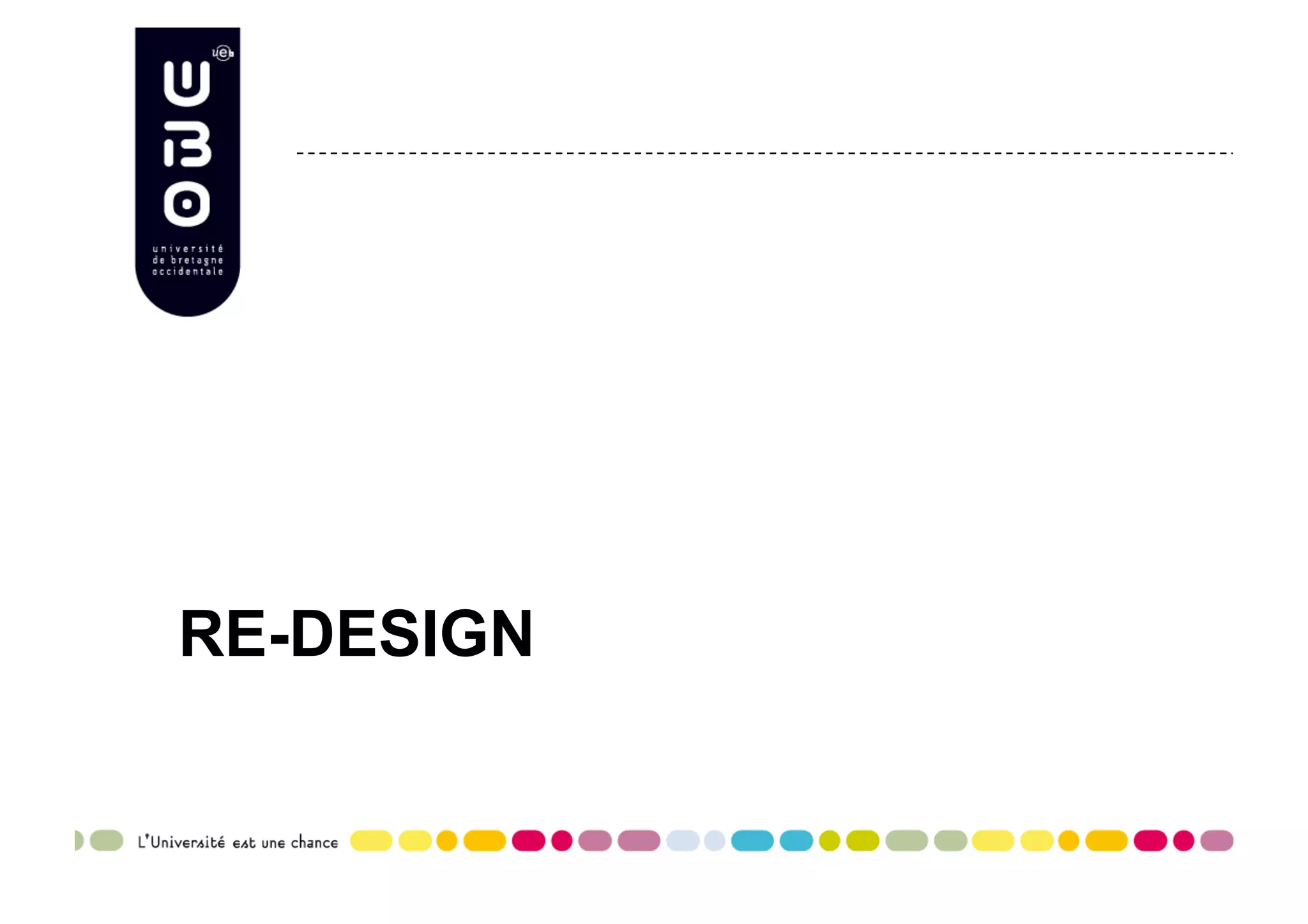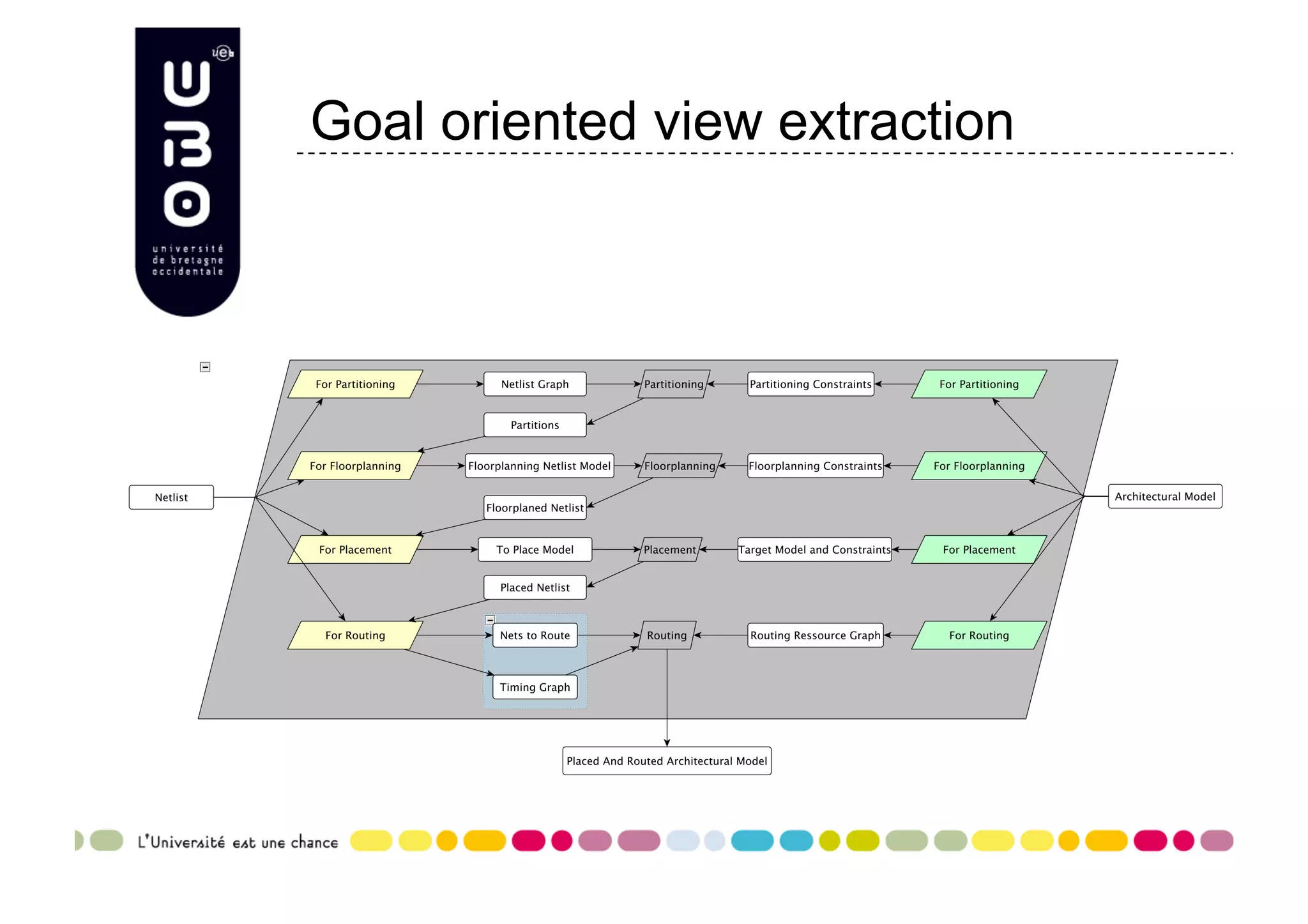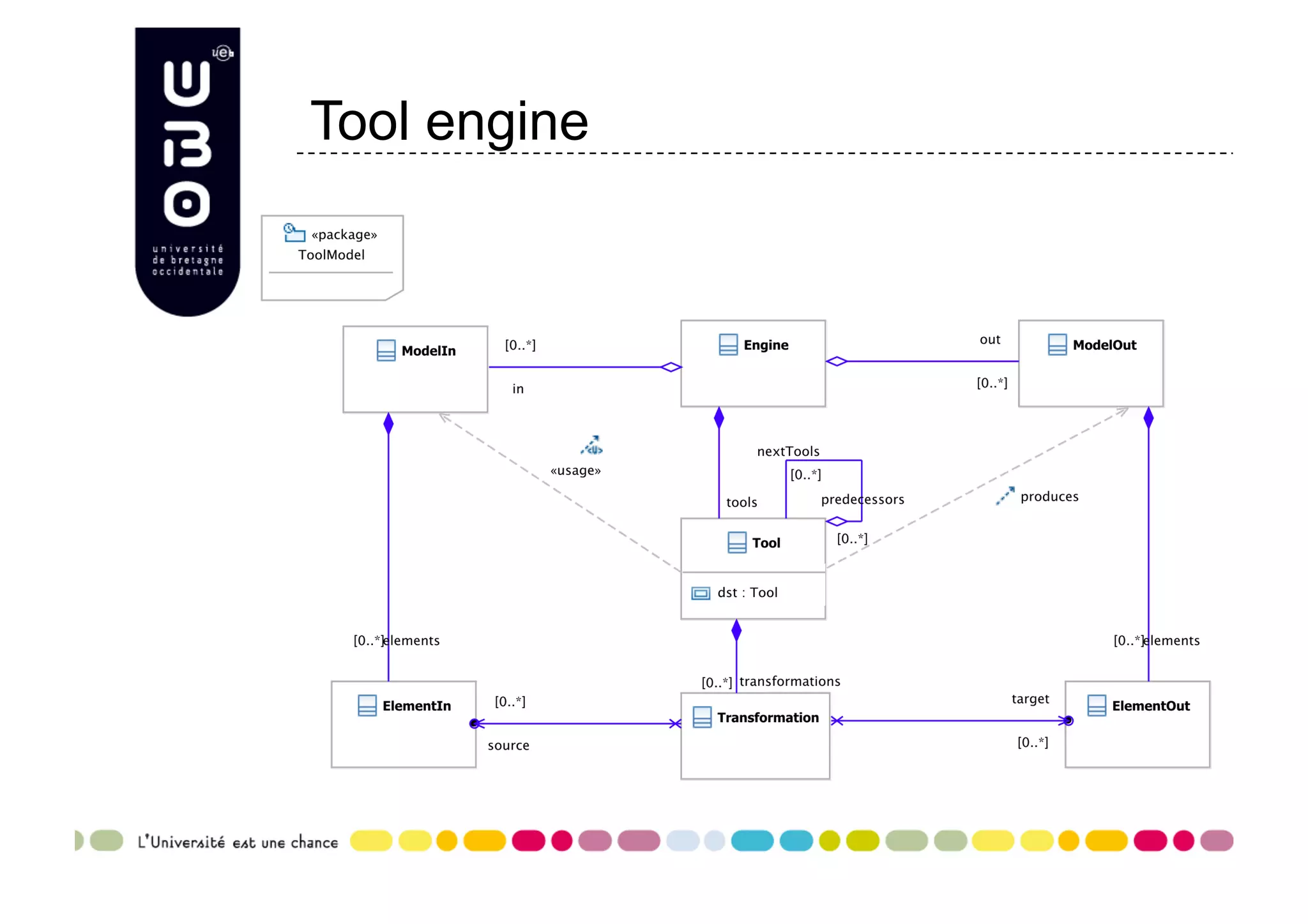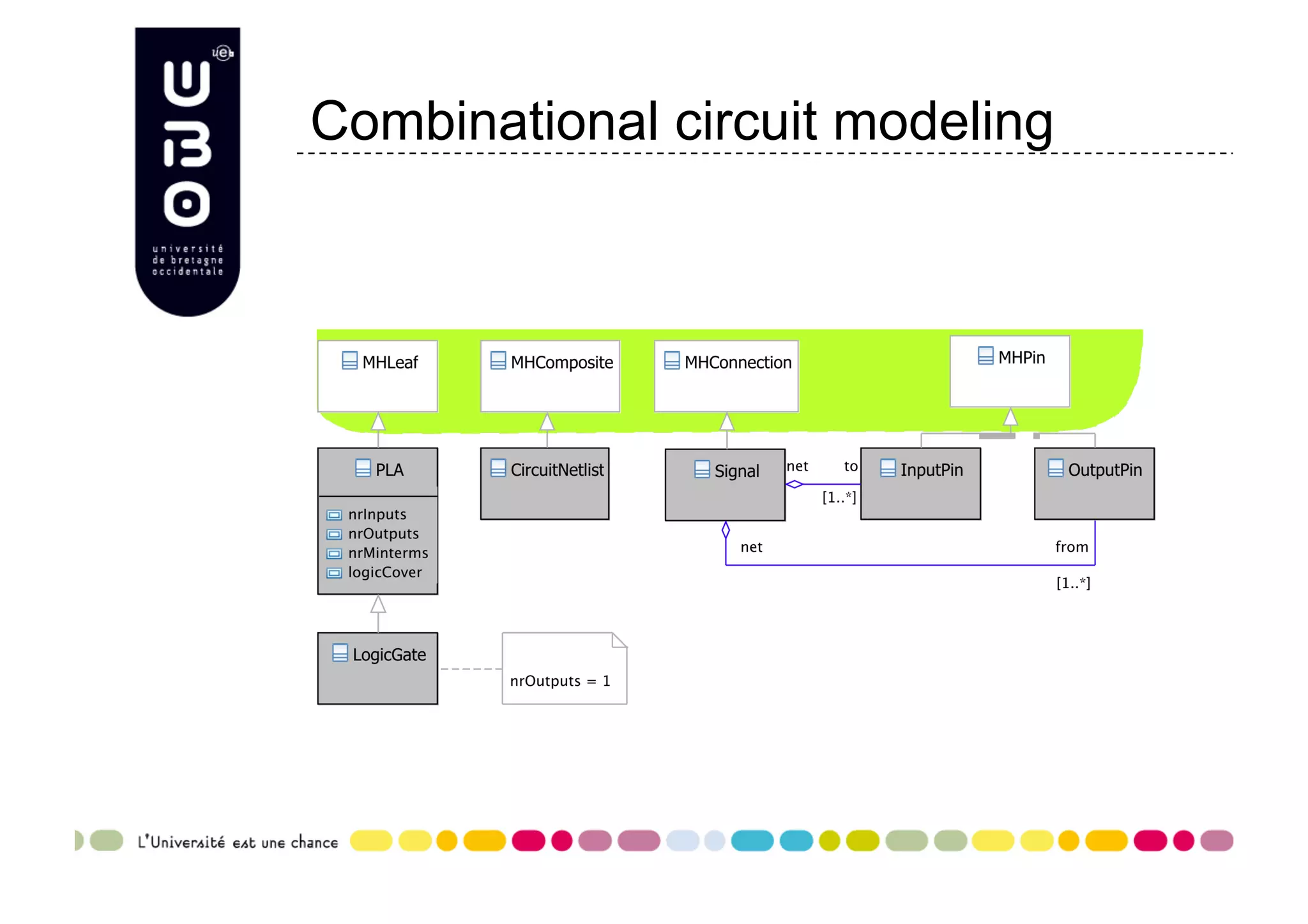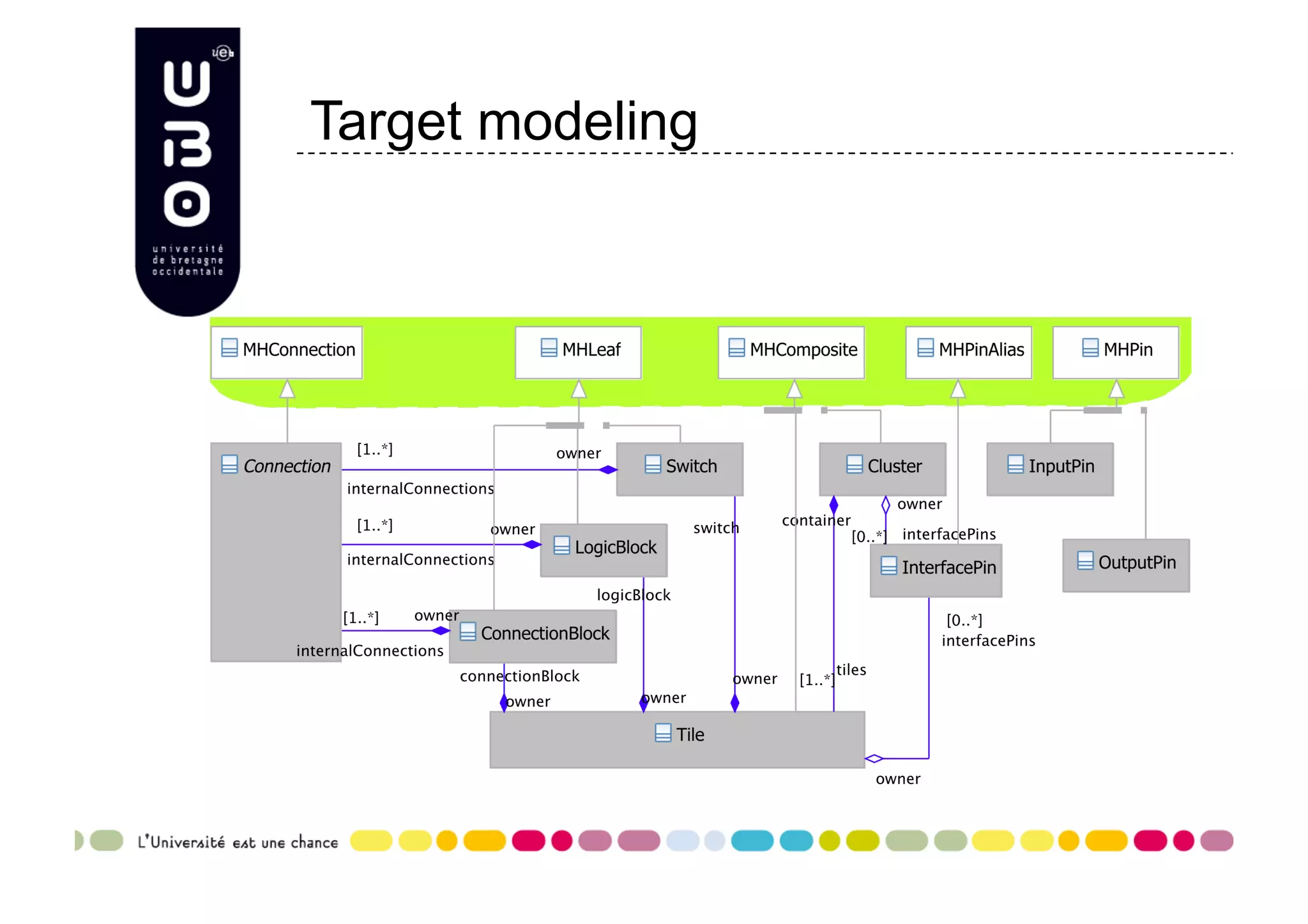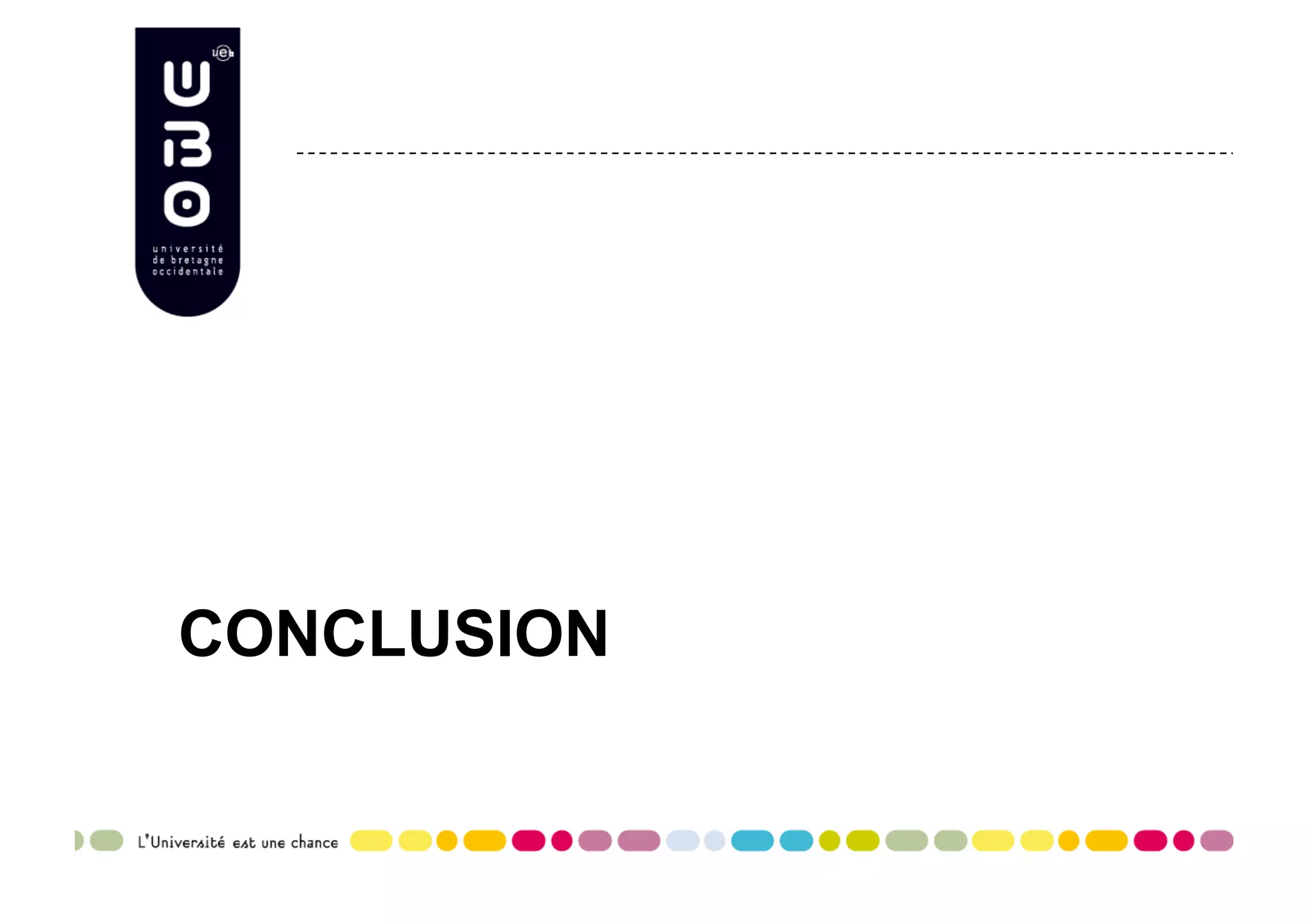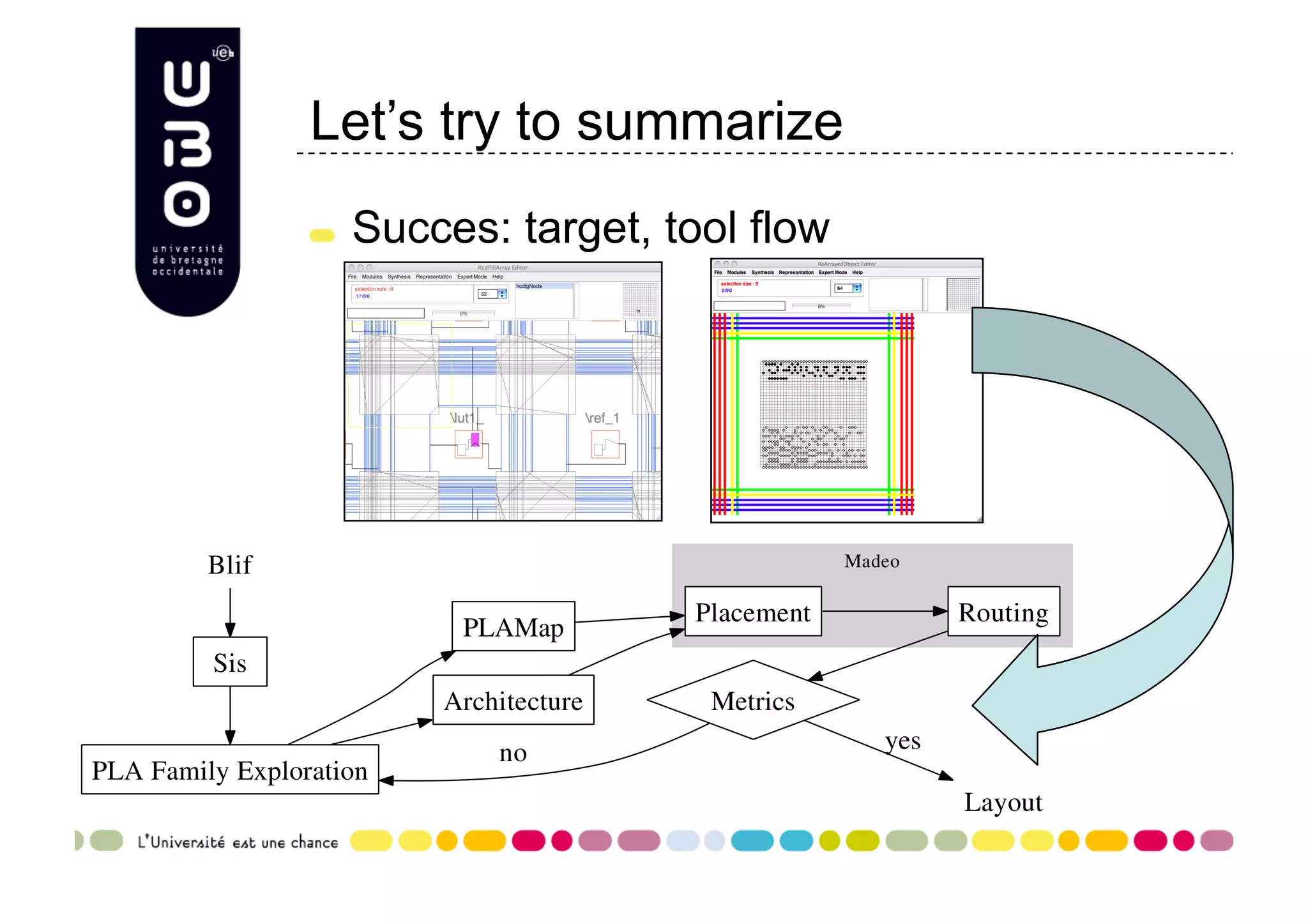MDE based FPGA physical Design and Fast prototyping with Smalltalk. FPGAs are flexible hardware but can be hard to program due to the time needed to design, debug, and bring to market. EDA tools are required for circuit design, debugging, and benchmarking. The document discusses using a Smalltalk-based approach and MDE to address challenges with legacy EDA tools by shifting to a model-driven architecture and repository of reusable components to improve performance, scalability, flexibility and durability of the FPGA design process. Future work areas include integrating additional tools like Mondrian, and improving performance, test coverage and a graphical algorithm selection interface.


